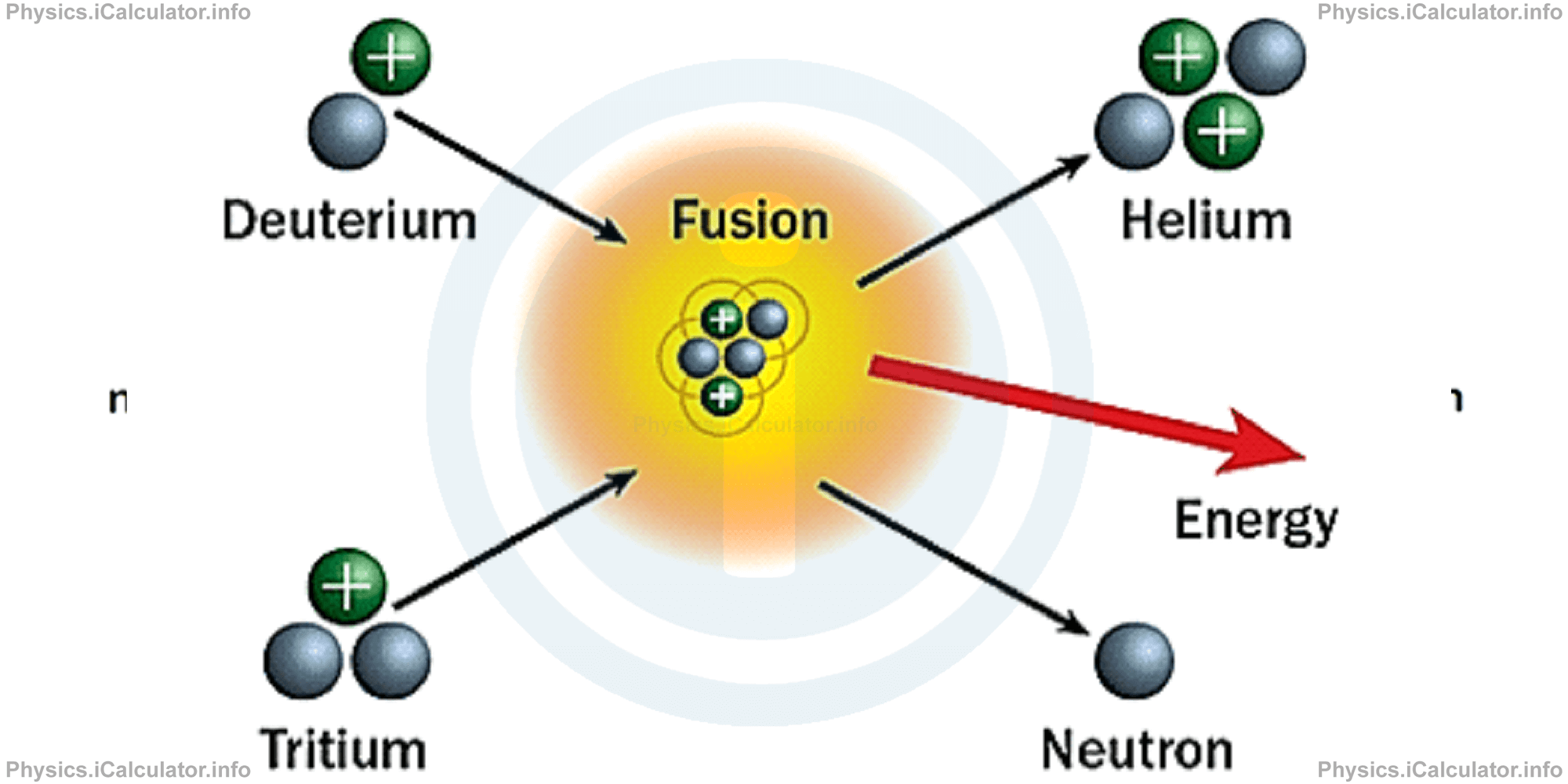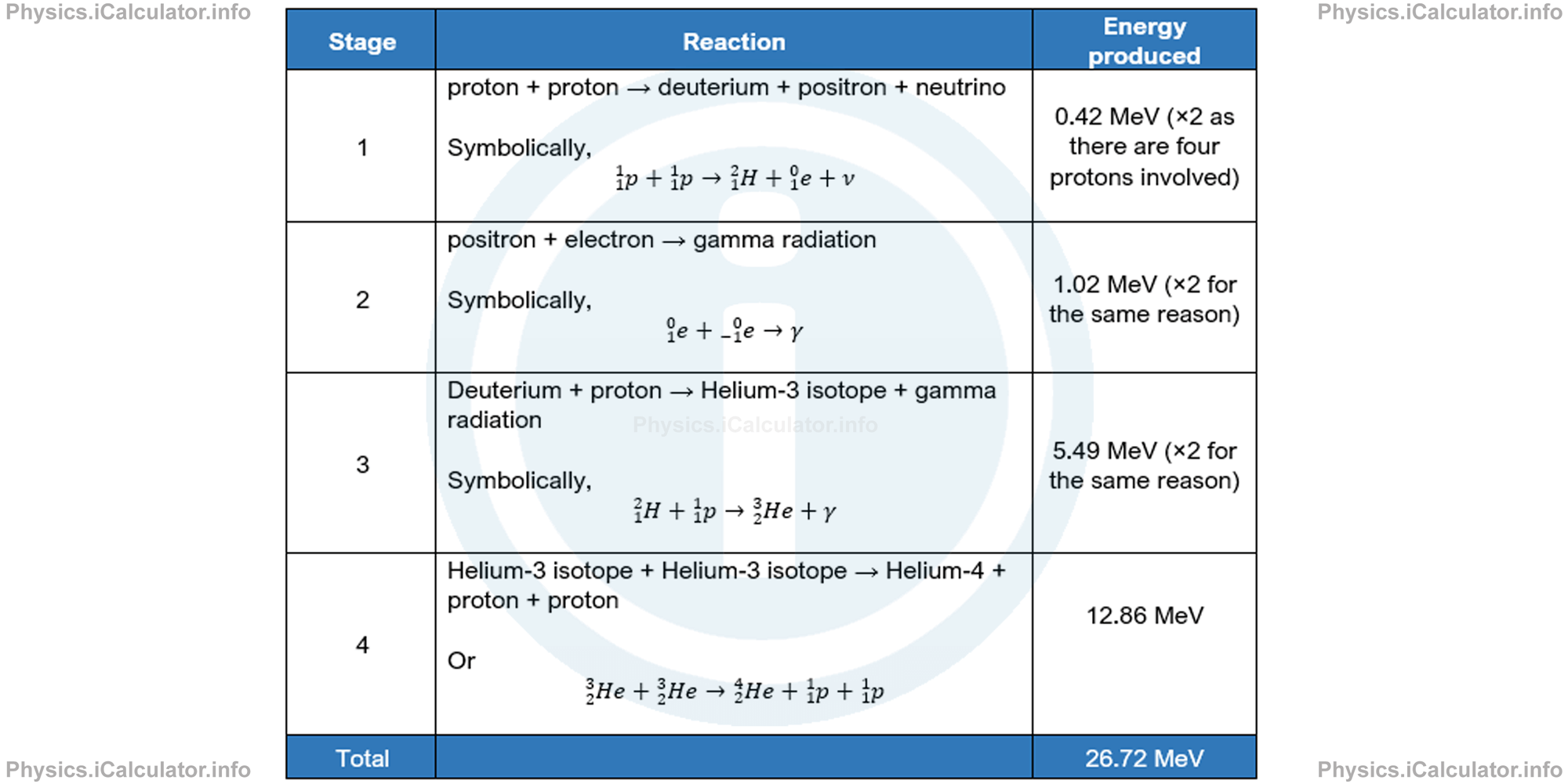Menu
Physics Lesson 20.4.3 - Nuclear Fusion
Please provide a rating, it takes seconds and helps us to keep this resource free for all to use
Welcome to our Physics lesson on Nuclear Fusion, this is the third lesson of our suite of physics lessons covering the topic of Nuclear Reactions, you can find links to the other lessons within this tutorial and access additional physics learning resources below this lesson.
Nuclear Fusion
Nuclear fusion is a process in which two parent nuclei merge to form a daughter nucleus. This is a typical case where the "target" and the "shell" are both atomic nuclei. The figure below shows an example of nuclear fission process where light atomic nuclei (hydrogen isotopes and helium) are involved.

A sufficient amount of kinetic energy in needed to overcome the electric force caused by the unbalanced charge in the two parent nuclei (both of them are positively charged). If the effect of (repelling) electric force is soothed, the two parent nuclei get closer and start interacting with each other through nuclear forces. This necessary kinetic energy is provided to parent nuclei by speeding them up in modern nuclear accelerators (this is why such processes cannot be realized at home conditions).
You may wonder why in the example of nuclear fusion provided in the above figure we have shown very light nuclei such as hydrogen isotopes given that the previous process (nuclear fission) occurs only in heavy nuclei. This is because fusion requires an external source of kinetic energy to speed up the parent nuclei. Despite improvements in technology, today is still impossible to build such powerful accelerators to give heavy nuclei enough kinetic energy to achieve nuclear fusion, i.e. to provide the parent nuclei enough kinetic energy to overcome electric forces and make the nuclei merge. Therefore, despite theoretically we can use whatever chemical element as source of nuclei in the process of nuclear fusion, practically this is still impossible.
On the other hand, in nuclear fission the parent nucleus must be heavy, as elements with many nucleons are less stable and therefore, not too much energy is needed to split them, unlike light nuclei that require a very high amount of energy to make them split in two parts.
The nuclear fusion reaction shown in the figure above, is symbolically written as:
where (21H) is the deuterium nucleus and (31H) is the tritium one.
Thus, like in fission, in nuclear fusion we also obtain free neutrons during the process. Nuclear fusion occurs very often in nature. An example in this regard is the Sun, in which a large number of proton-proton fusion-type reactions take place, according the scheme shown in the table below.

As you see, with the production of Helium-4 nuclei (Helium-4 is known as a noble gas, as it does not interact with other chemical elements) the process starts from the beginning with 2 new protons, i.e. this process is cyclic. This means when all hydrogen nuclei actually present in the Sun convert to helium, the Sun's life will come to an end (but this will occur several billions of year from now) as no nuclear reactions will occur anymore, hence no energy will be released. In fact, the Sun produces this type of nuclear energy since 5 billion years ago through continuous nuclear fusion-type reactions.
As you see from the table, from a chain of nuclear reactions derived by a double proton-proton fusion, a considerable amount of energy (26.72 billion electronvolts) is generated.
You have reached the end of Physics lesson 20.4.3 Nuclear Fusion. There are 11 lessons in this physics tutorial covering Nuclear Reactions, you can access all the lessons from this tutorial below.
More Nuclear Reactions Lessons and Learning Resources
Whats next?
Enjoy the "Nuclear Fusion" physics lesson? People who liked the "Nuclear Reactions lesson found the following resources useful:
- Fusion Feedback. Helps other - Leave a rating for this fusion (see below)
- Nuclear Physics Physics tutorial: Nuclear Reactions. Read the Nuclear Reactions physics tutorial and build your physics knowledge of Nuclear Physics
- Nuclear Physics Revision Notes: Nuclear Reactions. Print the notes so you can revise the key points covered in the physics tutorial for Nuclear Reactions
- Nuclear Physics Practice Questions: Nuclear Reactions. Test and improve your knowledge of Nuclear Reactions with example questins and answers
- Check your calculations for Nuclear Physics questions with our excellent Nuclear Physics calculators which contain full equations and calculations clearly displayed line by line. See the Nuclear Physics Calculators by iCalculator™ below.
- Continuing learning nuclear physics - read our next physics tutorial: Atomic Nucleus and Its Structural Properties
Help others Learning Physics just like you
Please provide a rating, it takes seconds and helps us to keep this resource free for all to use
We hope you found this Physics lesson "Nuclear Reactions" useful. If you did it would be great if you could spare the time to rate this physics lesson (simply click on the number of stars that match your assessment of this physics learning aide) and/or share on social media, this helps us identify popular tutorials and calculators and expand our free learning resources to support our users around the world have free access to expand their knowledge of physics and other disciplines.